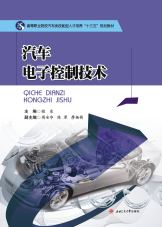
主要责任者: 敬东
责任方式: 主编
出版者: 西南交通大学出版社
出版地: 成都
字数: 517 千字
页码: 1-346
中图分类号: U463.602.7
语种:中
定价:46.00
出版时间:2016-11
丛书多卷书否:是
丛书名:高等职业院校汽车类技能型人才培养“十三五”规划教材
书目简介:本册工具书是高等职业院校汽车类技能型人才培养“十三五”规划教材之一,共收录172条词条。
被引频次:2
- moloch
- Molokai
- Molotov
- Molotov,Vyacheslav Mikhailovich
- molting
- Moltke,Helmuth Karl Bernard,Graf yon
- Moluccas
- molybdenite
- molybdenum
- Mombasa
- moment
- momentum
- Mommsen,Theodor
- Mon
- Monaco,Lorenzo
- Monaco,Principality of
- monad
- Monadhliath Mountains
- Monaghan
- Mona monkey
- monarch butterfly
- Monarchianism
- monarchy
- monasticism
- monazite